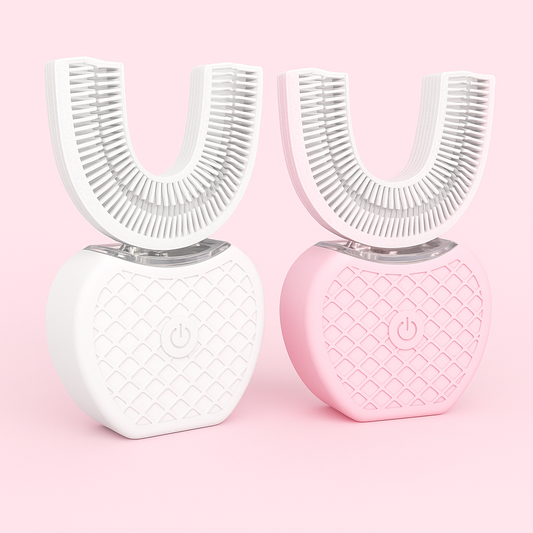Introduction
Interest in fluoride-free oral care continues to grow as consumers seek gentler formulas, more natural ingredient lists, and targeted actives like niacinamide and xylitol. If you are curious about switching to a fluoride-free niacinamide + xylitol toothpaste for whitening and enamel support, this practical guide covers the science, a safe transition plan, daily routines, product selection, troubleshooting, and frequently asked questions.
How Niacinamide and Xylitol Work in the Mouth
- Niacinamide (vitamin B3): A water-soluble vitamin that can support epithelial barrier function and reduce inflammation. In oral care formulas, niacinamide is used to soothe gum tissues and may help reduce redness and irritation that can accompany gingivitis or sensitivity.
- Xylitol: A naturally occurring sugar alcohol found in many fruits and vegetables. Xylitol cannot be metabolized by common cavity-causing bacteria, which reduces their growth and acid production. Regular use of xylitol-containing toothpaste or gum helps maintain a more balanced oral microbiome and reduces the risk of plaque-driven staining.
What Fluoride Does and Why People Consider Alternatives
Fluoride is a well-established cavity prevention agent that helps remineralize enamel and resist acid attacks. However, some people choose fluoride-free products due to:
- Preference for natural or minimalist ingredient lists
- Personal or household sensitivity to fluoride
- Concern about swallowing fluoride in children or individuals with certain health preferences
Choosing a fluoride-free toothpaste is reasonable for many low-risk adults, but it is important to weigh the benefits and limits and to consult a dentist if you have a history of decay.
Can Fluoride-Free Niacinamide + Xylitol Toothpaste Whiten Teeth?
Whitening outcomes depend on the type of stains. Surface extrinsic stains caused by coffee, tea, tobacco, and plaque respond best to consistent cleaning and mild polishing agents found in many toothpastes. A well-formulated niacinamide + xylitol toothpaste can help by:
- Reducing plaque and bacterial staining through xylitol action
- Improving gum health and reducing inflammation so teeth appear cleaner and brighter
- Using gentle abrasives to remove surface discoloration without over-wearing enamel
For intrinsic stains that come from within the tooth, professional whitening treatments or peroxide-based systems are more effective than any toothpaste alone.
Evidence and Safety Notes
- Clinical studies support xylitol as an effective adjunct to reduce caries-related bacteria and lower cavity risk when used regularly.
- Niacinamide is widely used in dermatology and is generally well tolerated in oral care; however, clinical dental studies are fewer and tend to focus on anti-inflammatory benefits rather than whitening per se.
- Fluoride remains the gold standard for remineralization for high-risk populations; if you are high-risk for cavities, consult a dentist before removing fluoride from your routine.
Who Should Think Twice Before Switching
- People with multiple active cavities or a history of rapid decay
- Children under supervised dental advice where fluoride toothpaste is recommended to prevent caries
- Those with frequent acid reflux, dry mouth, or other conditions that increase decay risk
Step-by-Step Safe Transition Plan
- Schedule a dental checkup and discuss your plan. Know your baseline cavity risk and enamel health.
- Choose a high-quality fluoride-free niacinamide + xylitol toothpaste from a transparent brand. Try a travel size first to test tolerance.
- Keep brushing twice daily with a soft-bristled brush for two minutes and floss once daily. Technique matters most.
- Use a 30 to 90 day monitoring window. Track tooth sensitivity, any new spots, or gum changes. If issues arise, consult your dentist.
- Consider periodic professional fluoride varnish or in-office remineralization if your dentist recommends it as a safety net.
Daily Oral Care Routine That Maxes Out Benefits
Here is a sample daily routine to support whitening and enamel care while using fluoride-free toothpaste:
- Morning: Brush with niacinamide + xylitol toothpaste, rinse lightly with water. Follow with a tongue scrape to reduce biofilm and freshen breath.
- After meals: Chew sugar-free gum containing xylitol for 10 to 20 minutes to stimulate saliva and neutralize acids.
- Evening: Floss, then brush with the same toothpaste. Use interdental brushes where needed for optimal plaque removal.
- Weekly: Avoid abrasive whitening polishes more than a few times per week to protect enamel. Consider a gentle whitening paste once or twice weekly if desired and safe for your enamel.
Complementary Products to Use
- Xylitol chewing gum to extend anti-caries benefits between brushing sessions
- Mild alcohol-free mouthwash for fresh breath and plaque control if compatible with your formula
- Remineralizing serums or dentifrices containing calcium and phosphate if you want extra enamel support
How to Read Labels: Practical Checklist
- Look for niacinamide and xylitol on the ingredients list; their placement gives an idea of concentration but not exact amounts.
- Avoid high-abrasivity products. Brands that publish RDA (relative dentin abrasivity) scores are preferred; aim for low to moderate RDA for daily use.
- Watch out for high concentrations of strong bleaching agents; toothpaste-level whitening usually uses mild abrasives rather than peroxide.
- Prefer brands that disclose third-party testing, clinical trials, or dentist recommendations.
Common Ingredients to Avoid or Use Sparingly
- Strong abrasive agents used daily can thin enamel and increase sensitivity
- High alcohol mouthwashes used too frequently can dry oral tissues and reduce natural protection
- Some essential oils or flavoring concentrates may irritate sensitive tissues; test patch use if you have oral sensitivity
Comparing Alternatives: Fluoride-Free vs Low-Fluoride vs Fluoride Toothpaste
If you are unsure about fully removing fluoride, consider these options:
- Fluoride-free: No fluoride. Good for low-risk adults who want alternative actives like niacinamide and xylitol.
- Low-fluoride: Some products aimed at people who want minimal fluoride exposure while retaining some remineralization benefits.
- Regular fluoride: Best evidence for cavity prevention; recommended for high-risk individuals and often used in combination with a xylitol routine.
Troubleshooting: What to Watch For
- Increased sensitivity: Could indicate enamel wear from an abrasive product or underlying erosion. Stop use and consult your dentist.
- New cavities or white spots: Return to your dentist promptly; you may need fluoride-based interventions.
- Gum irritation: Niacinamide is usually soothing, but any persistent irritation warrants stopping the product and checking for allergic reactions.
How Long Until You See Results
Expect to notice improved surface brightness and fresher breath within 2 to 6 weeks of consistent use. Plaque reduction and healthier-looking gums may take 4 to 12 weeks. Intrinsic whitening, if needed, requires professional care.
SEO-Friendly Shopping Tips and Keywords to Use
When researching products online, use specific search phrases to find formulas that match your goals. Helpful queries include:
- best toothpaste for whiter teeth
- toothpaste without fluoride
- toothpaste with xylitol
- niacinamide toothpaste
- toothpaste that whitens teeth
To browse a curated selection of fluoride-free whitening options, try searching vendor collections on trusted specialty sites. For example, see a range of options at the Havana Body collection for whitening and fluoride-free choices by searching their site for good whitening toothpaste or toothpaste with xylitol.
Real-World Examples and Case Notes
- Case A: Low-risk adult switched to fluoride-free niacinamide + xylitol toothpaste. After three months, staining from coffee reduced, gum inflammation improved, no new cavities.
- Case B: Patient with high decay history tried to quit fluoride without dentist advice and developed new lesions; dentist recommended return to fluoride plus targeted xylitol support.
Product Selection Checklist
- Contains both niacinamide and xylitol prominently in the formula
- Clear information on abrasivity or RDA when possible
- Positive user reviews and transparent ingredient sourcing
- Availability of travel size for testing before committing
- Brand offers guidance or clinical notes on intended use
Expanded FAQ
- Is niacinamide safe to swallow in toothpaste? Niacinamide in toothpaste is used at low concentrations and is generally safe. Avoid swallowing toothpaste and follow usage directions.
- Does xylitol replace the need for fluoride? No. Xylitol supports a healthier oral environment but does not provide the same enamel remineralization mechanism as fluoride. High-risk patients should consult a dentist before eliminating fluoride.
- Can children use niacinamide + xylitol toothpaste? Check pediatric recommendations. Many fluoride-free formulas are aimed at older children and adults. For young children, follow pediatric dental guidance regarding fluoride exposure.
- How often should I change toothpaste if I want whitening? Rotate between a gentle whitening paste a few times per week and your regular toothpaste to prevent abrasion. Always prioritize enamel safety.
How to Monitor Progress: A 12-Week Tracking Plan
- Week 0: Take clear photos of your teeth under consistent lighting to set a baseline.
- Weeks 1-4: Note changes in breath, plaque levels after brushing, and any sensitivity.
- Weeks 5-8: Look for reduction in surface staining and gum health improvements.
- Weeks 9-12: Re-evaluate photos and consult your dentist if you notice negative changes.
Where to Buy and Sponsored Recommendations
If you want to explore high-quality fluoride-free toothpaste options with niacinamide and xylitol, check specialty collections using targeted search queries like best toothpaste for whiter teeth or toothpaste without fluoride. A curated selection is available at Havana Body for people seeking fluoride-free whitening alternatives, including options marketed as toothpaste that whitens teeth and toothpaste with xylitol. Browse their products for formulations that match your preferences and consider starting with a smaller size to test tolerance.
Visit Havana Body to view options for the best toothpaste whitening teeth and fluoride toothpaste free selections: shop Havana Body.
Practical Tips for Sustained Results
- Limit staining beverages or rinse with water after consuming coffee, tea, or red wine.
- Use a straw for acidic or staining drinks to reduce contact with teeth.
- Keep up with professional cleanings every six months or as advised by your dentist.
- Maintain consistent xylitol usage, for example with toothpaste plus xylitol gum after meals.
Final Thoughts and Invitation
Switching to a fluoride-free niacinamide + xylitol toothpaste can be a safe, effective choice for many low-risk adults who want gentle enamel care and surface whitening. The key is informed selection, careful monitoring, and partnering with your dental professional when needed.
If you are ready to try thoughtfully formulated fluoride-free options, consider exploring Havana Body for curated choices in fluoride-free whitening and toothpaste with xylitol. Their selection includes products promoted as good whitening toothpaste and options for people seeking toothpaste without fluoride or niacinamide toothpaste formulations. Visit Havana Body to learn more and purchase products to test a new routine: buy Havana Body products.
Disclaimer: This article is educational and not a substitute for professional dental advice. Consult your dentist before making significant changes to your oral care routine, especially if you have a history of dental disease or elevated cavity risk.


